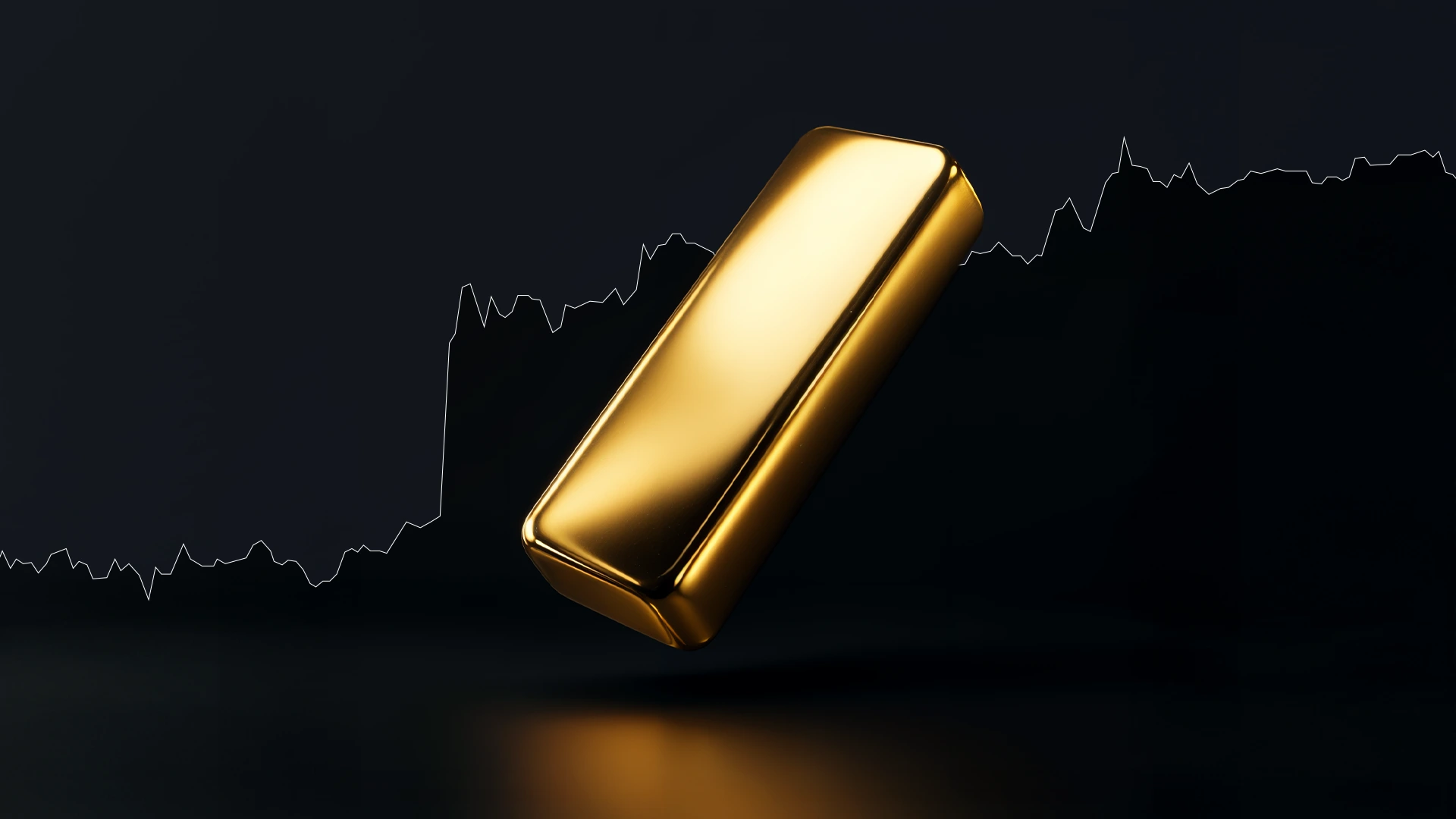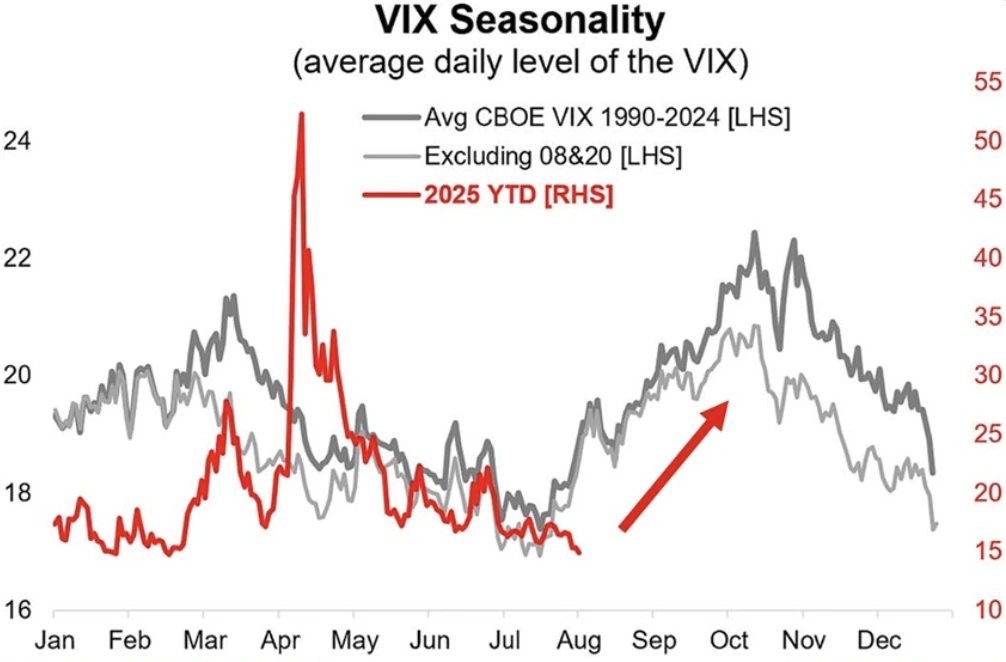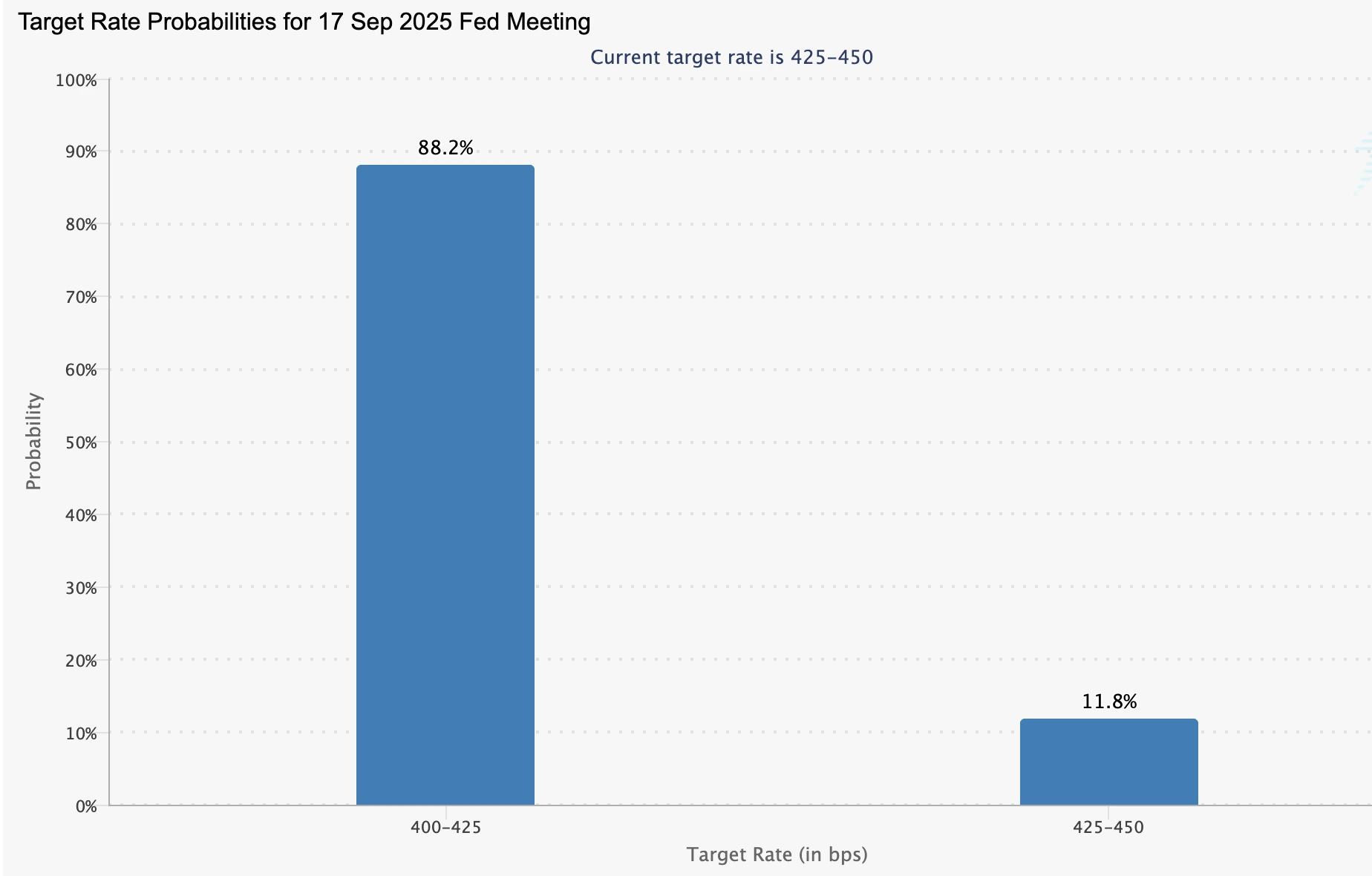Gold prices rise amidst anticipated market volatility
Gold prices rise amidst anticipated market volatility
Gold prices rise amidst anticipated market volatility

As we enter the latter half of 2025, the allure of gold is on the rise, primarily due to anticipated market volatility and potential changes in U.S. Federal Reserve policy. The Volatility Index (VIX) is currently resting near its yearly low of 17.48 but is expected to increase as we approach October—a trend that often drives investors toward gold, a renowned safe-haven asset.
According to recent data from the World Gold Council, global demand for gold reached an unprecedented $132 billion in Q2 2025. This surge is attributed to increased ETF inflows, heightened retail investor activity, and rising concerns over inflation and trade risks.
Key points to consider
- The VIX is presently close to its seasonal low, but historical trends indicate a potential 30% rise from August to October, fostering a risk-averse market sentiment.
- In Q2 2025, gold demand soared to $132 billion, with investment flows increasing by 78% year-on-year. ETF inflows are at their highest since 2020.
- The likelihood of a Fed rate cut in September is now at 87.8%, driven by disappointing employment figures and climbing PCE inflation, creating a favourable environment for gold.
- Recent U.S. tariffs on major trading partners like Canada, India, and Brazil have heightened inflation risks and global trade uncertainty, bolstering interest in gold.
How rising market volatility is boosting gold demand in 2025
The VIX, often dubbed Wall Street's "fear gauge," has dropped over 45% since April, but this calm may be short-lived. Historical data suggests that the VIX typically rises from August to October due to factors such as institutional rebalancing, earnings volatility, and geopolitical events.

Periods of increased VIX often align with rising gold prices. As risk sentiment shifts, both institutional and retail investors tend to channel funds into gold ETFs and physical gold. Research from 2021 discovered a positive correlation between gold returns and implied volatility during periods of market stress.
While the S&P 500 has maintained its position above the 20-day moving average for a record 68 sessions, low implied volatility and elevated equity valuations indicate that gold may be well-positioned should the sentiment shift to risk-off.

Will Fed Rate cuts and inflation push gold price higher in 2025?
Gold's attractiveness is on the rise, parallel to growing expectations for monetary easing. The CME FedWatch Tool indicates an 87.8% probability of a Fed rate cut in September, up from 63% just a week ago, with another cut anticipated in December.

Recent U.S. labour market data revised nonfarm payrolls down by 258,000 jobs, reinforcing the notion that the Fed may need to ease to prevent further economic decline. Additionally, the Fed's preferred inflation metric, the Personal Consumption Expenditures (PCE) Index, saw a 0.3% increase in June, partly attributed to rising costs from trade tariffs.
Lower interest rates reduce the opportunity cost of holding gold, while persistent inflation highlights gold's value as a wealth store. The World Gold Council forecasts global inflation could exceed 5% in the latter half of 2025, even as economic growth remains sluggish—conditions historically beneficial for gold.
Gold demand hits record $132B in Q2 2025 as ETF inflows surge
The World Gold Council’s Q2 2025 report highlights:
- A 3% year-on-year increase in total gold demand by volume to 1,249 metric tons.
- A 45% surge in demand by value, reaching a record $132 billion.
- ETF inflows of 170 metric tons in Q2, with H1 demand reaching 397 metric tons—the strongest since H1 2020.
- Strong bar and coin demand in China and Europe, with Chinese retail investment in gold surpassing jewellery consumption for the first time in years.
- An increase in OTC and institutional demand, while central bank gold purchases, although down 33% from Q1, remained above historical averages at 166 metric tons.
Tech use and gold jewellery demand fall as investment surges
While investment demand surged, gold demand for jewellery and technology applications weakened:
- Global jewellery demand fell to 341 metric tons, the lowest since Q3 2020 and 30% below the five-year average.
- Technology-sector gold usage declined 2% year-on-year to 79 metric tons, amid trade uncertainty and reduced East Asian manufacturing activity.
- The World Gold Council noted that demand from AI-related technologies helped offset the broader decline in electronics.
Gold supply rises in Q2 2025, but recycling remains weak
Gold supply increased to 1,249 metric tons in Q2 2025, driven by a record 909 metric tons in mine production and a 4% rise in recycling activity. However, recycling remains subdued compared to historical patterns, suggesting that holders are hesitant to sell amidst rising prices and economic uncertainty.
Gold price technical outlook
Currently, gold is experiencing a retreat from a recent price increase. This pullback is occurring in a known sell zone, hinting at potential short-term downside. Nevertheless, volume analysis indicates significant buy pressure, which supports the overall bullish narrative.
Should gold prices break through current levels, they may encounter resistance near $3,440. On the downside, any pullback might find support at $3,345 and $3,285, levels that traders will keep a close eye on as potential accumulation zones.

What does this mean for gold in 2025?
Gold seems poised to benefit from several macroeconomic catalysts:
- Increasing market volatility (VIX) typically correlates positively with gold during periods of financial stress.
- Rate cuts are being increasingly factored in, making non-yielding assets like gold more appealing.
- Persistent inflation and new tariffs could further strengthen gold’s role as a hedge.
- Robust investment flows, especially in ETFs and physical bars, signal strong investor conviction.
What investors should watch: Gold outlook 2025 in a volatile market
Gold is drawing renewed interest as uncertainty builds across markets. With demand hitting record levels, ETF inflows climbing, and expectations for interest rate cuts growing, conditions are lining up for a possible move higher. Investors should watch key indicators like inflation data, Fed decisions, and any rise in market volatility for further signs of strength.
If gold breaks above the $3,440 level, it could mark the start of a stronger rally. For long-term investors, gold continues to offer value as both a way to spread risk and protect against inflation in a still-uncertain economic landscape.
Trade gold’s next movements with a Deriv MT5 account today.
The performance figures quoted are not a guarantee of future performance. This content is not intended for EU residents.















